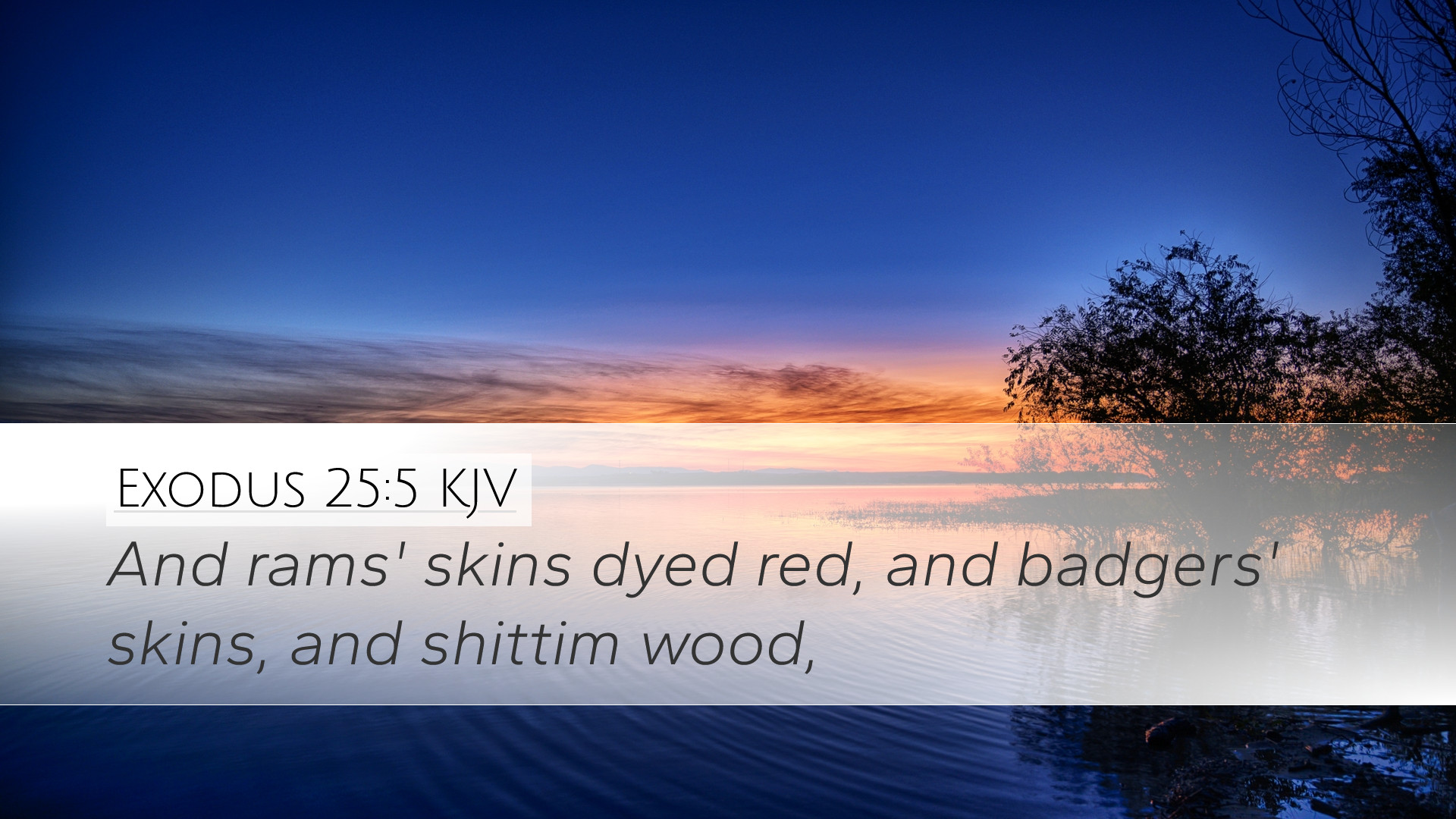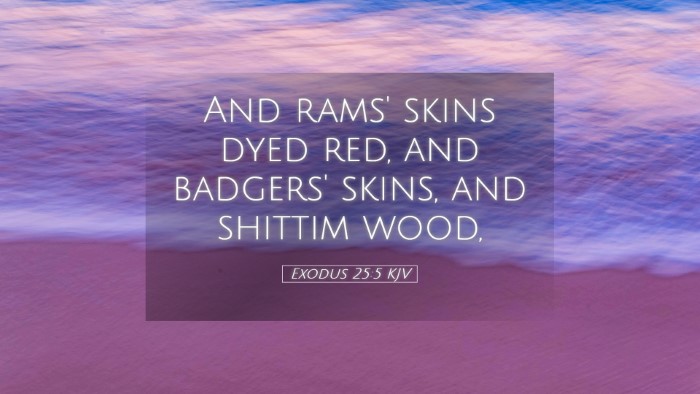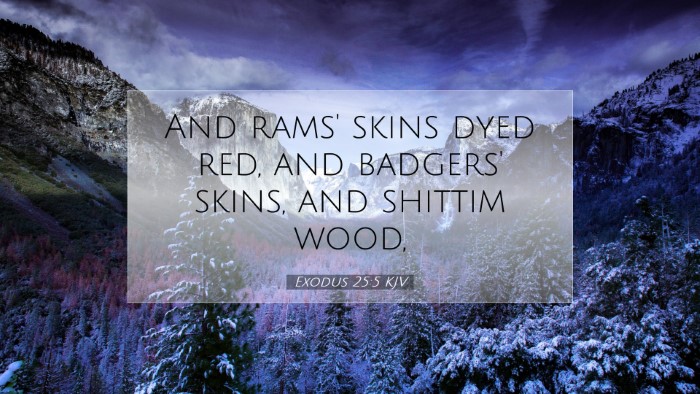Commentary on Exodus 25:5
Exodus 25:5 reads: "And rams' skins dyed red, and badgers' skins, and shittim wood." This verse is part of the larger narrative in Exodus where God gives detailed instructions for the construction of the tabernacle, the dwelling place of God among His people. In analyzing this verse, we draw insights from respected public domain commentaries by Matthew Henry, Albert Barnes, and Adam Clarke.
Overview of the Context
The instruction surrounding the tabernacle highlights God’s desire to dwell among His people, symbolizing His presence, holiness, and the covenant relationship between God and Israel. The materials listed in Exodus 25:5 serve as crucial components of the outer covering and structure of the tabernacle.
Material Insights
- Rams' skins dyed red: This material is significant for its durability and its vivid color, which represents sacrifice and atonement. According to Matthew Henry, it symbolizes the sacrificial system established for the people and foreshadows the ultimate sacrifice of Christ.
- Badgers' skins: Albert Barnes notes that this skin serves as an outer covering, possibly indicating protection for the sacred items held within the tabernacle. The use of badgers' skins emphasizes God’s provision for safeguarding the holy space from external threats.
- Shittim wood: Adam Clarke elaborates on shittim wood, recognized for its strength and resistance to decay. This wood is treated with value, representing the stability and enduring nature of God’s promises to His people. Its use points to the intricacy of God’s plans and the quality of materials to be utilized in His service.
Theological Significance
The materials chosen by God for the construction of the tabernacle are rich in theological implications. Each material reflects aspects of the character of God and the relationship He desires with humanity.
Symbolism of Sacrifice
Matthew Henry emphasizes the importance of the red-dyed rams' skins as a representation of the blood covenant. Just as these skins were dyed red, so too the people were reminded of the sacrificial system instituted to maintain their relationship with God. This foreshadows the New Testament revelation of Christ as the ultimate Lamb of God.
Divine Protection
The badgers' skins symbolize divine protection. Albert Barnes states that just as God provided these skins for the tabernacle, He provides protection for His people against the world’s impending threats. This alludes to the spiritual shelter believers find in Christ’s sacrifice and ongoing intercession.
Stability and Durability
Shittim wood’s strength and durability speak to God’s everlasting promises. Adam Clarke notes that this material serves to remind the Israelites of the dependable nature of their covenant with God. It signified that just as the tabernacle would stand firm, so too would God's faithfulness stand eternal.
Application for Believers
This verse challenges modern-day believers to consider how they can create a dwelling place for God within their own lives. Each material serves as a metaphor for personal commitment and spiritual discipline.
- Embrace Sacrifice: Just as the rams' skins underscore the importance of sacrifice, believers are called to a life of self-denial and taking up their crosses for the sake of the Gospel.
- Seek Divine Protection: The use of badgers' skins teaches us to rely on God’s protection in all aspects of life and ministry.
- Build on a Strong Foundation: The symbolism of shittim wood invites believers to ground their lives in the Word of God, ensuring that their spiritual structures can withstand trials and tribulations.
Conclusion
Exodus 25:5 is not merely a list of materials, but a profound reflection on God's unyielding desire to be in communion with His people. The insights from Matthew Henry, Albert Barnes, and Adam Clarke collectively encourage pastors, students, theologians, and scholars to delve deeper into the symbolism and significance of the tabernacle's construction, fostering a richer understanding of God's character and commitment to His covenant people.


